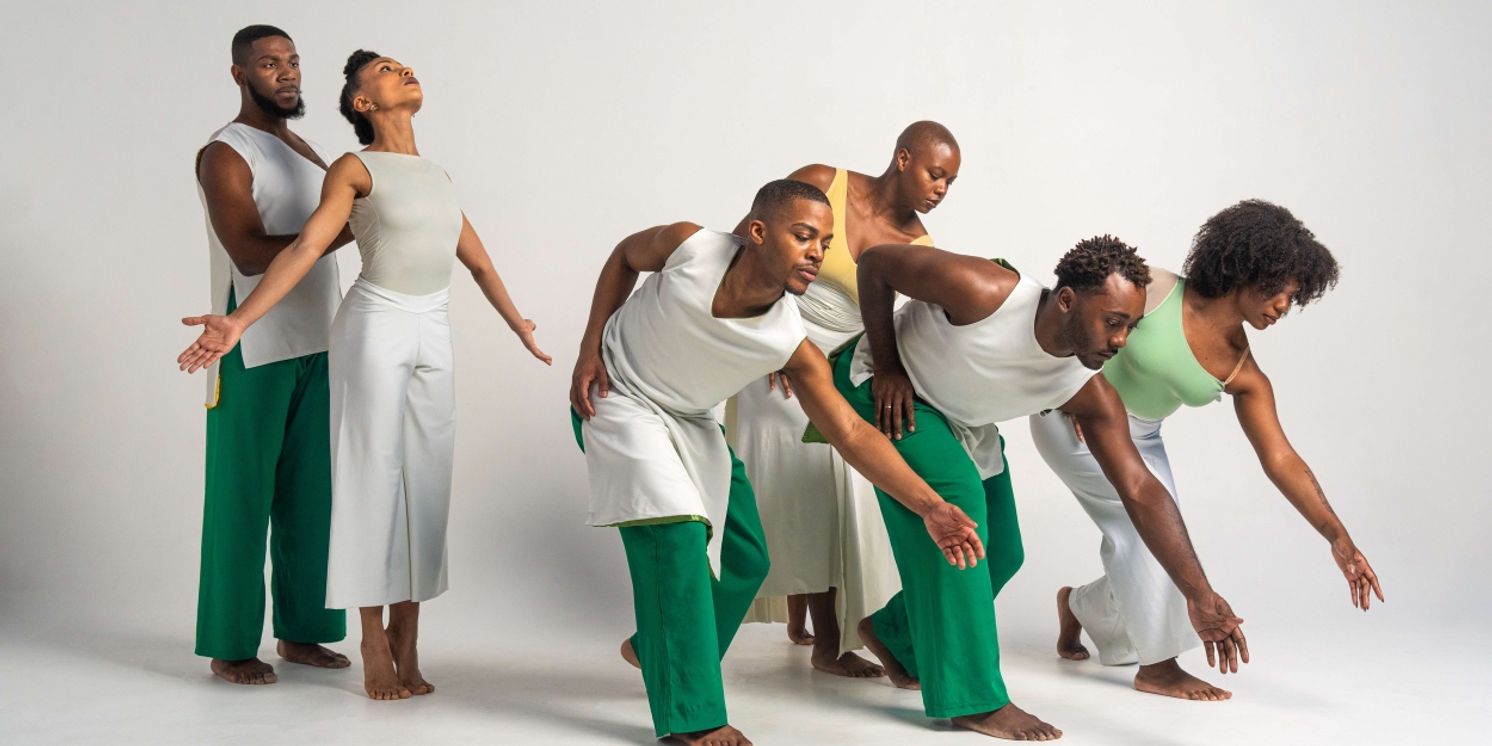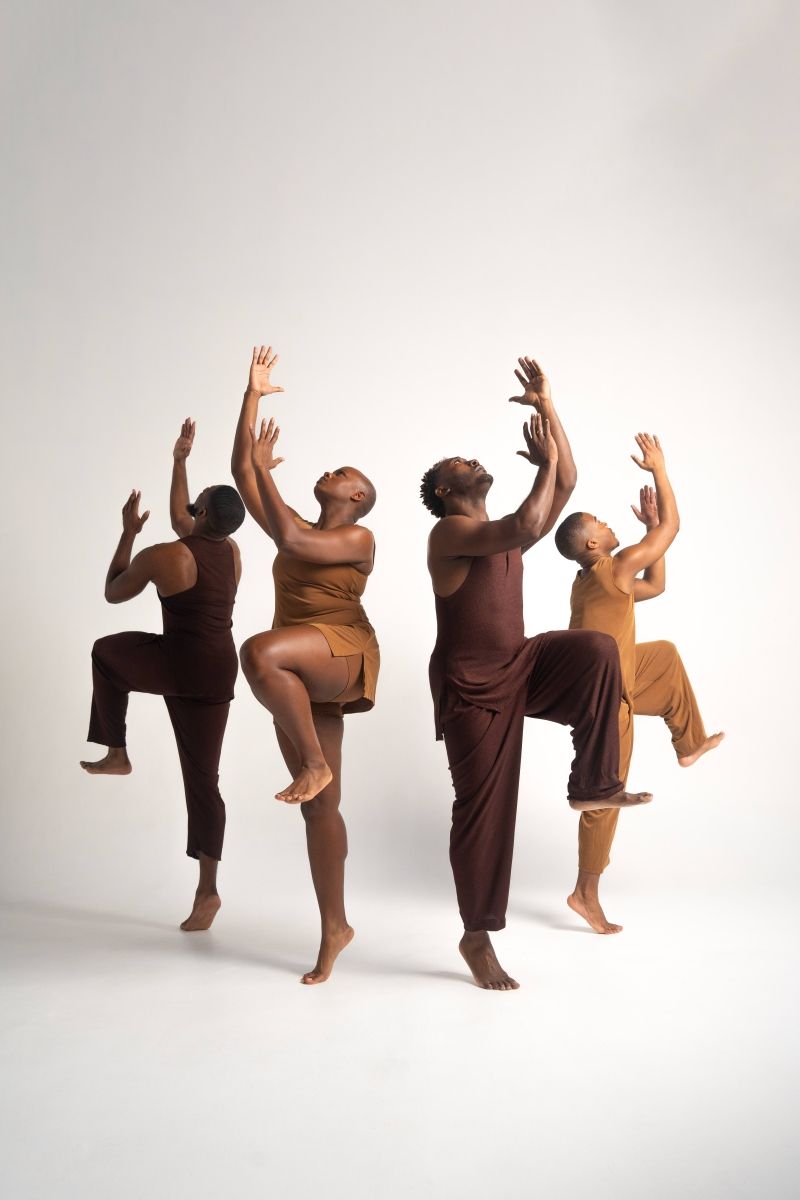Review: Ronald K. Brown/EVIDENCE at The Joyce Theater Through 2/21
Ronald Brown/EVIDENCE will be presented at The Joyce Theater through January 21st.

Editor’s Note: We welcome this guest review by Kirsten Evans. Evans is a freelance artist, dancer, and writer based in NYC and Providence, RI. She danced professionally with Festival Ballet Providence (now Ballet RI) for 13 years, performing a wide repertoire of principal roles in both classical and contemporary works including those by George Balanchine, Christopher Wheeldon, Trey McIntyre, Andy Schermoly, and Annabelle Lopez Ochoa. Kirsten graduated summa cum laude from Providence College with a BA in Liberal Arts/Journalism. Her writing has been published in several publications including Pointe Magazine, Dance Magazine, The Independent, The Wonderful World of Dance, Motif Magazine, and Broadway World. Kirsten has written two books, Four Decades of Dance: A History of Festival Ballet Providence, and The Silhouette Inside, a collection of original poems and illustrations. She is also the founder and director of the dance/music collaborative Revolve Dance Project.
Strong, somber notes from a piano fill the The Joyce Theater as the curtain rises on the annual home season of Brooklyn-based fusion dance company, EVIDENCE. Four spotlights light up each corner of the stage, illuminating the evening’s most heavily featured dancers, Demetrius Burns, Joyce Edwards, Gregory Hamilton, and Isaiah K. Harvey, dressed in shades of brown.
First on the program, EVIDENCE Founder/Artistic Director Ronald K. Brown’s Walking Out the Dark (2001) reflects conversations among loved ones. It is direct, yet mesmerizing. The dancers move with urgency, confronting one another in the center of the stage, almost as if to challenge each other. Here, the mix of traditional African with contemporary dance is most evident, Brown’s choreography focusing on the extreme opposition of the limbs to tell the story. There’s a heaviness to the movement and the intention, felt in the hips, the heels, and the hearts.
Voices layer into the soundscape, mirroring the textured conversations between the dancers, piling one on top of the other. There’s a sense of rage, but also control in the movement vocabulary, anger and shame that feel deeply intimate. Brown has effectively placed the audience in the room to quietly observe these personal relationships; the dancers do not acknowledge us until more than halfway through the piece.
As Walking progresses, so does the pace and desperation in the music, reflecting the dancing. Bird sounds and gestures ground the piece, bringing us outside, into nature. The dancers form a line across the front of the stage, fall to the ground facing up to the rigging, and a dramatic splash of dark sand pours down over them before a perfectly timed black out sucks the wind from the house. The crowd roars in gratitude for our collective transportation into the world of Ronald K. Brown.
The choreographer himself also takes the stage during Walking, in a powerful reading of self-written text, which acknowledges shared grief. Using beautiful, gutting imagery, Brown recalls meeting across from “the black and purple painting of our grief” and “wishing the ghosts were here”.
The dancers return dressed in colorful costumes, and their dancing becomes more celebratory and free. They move in a way that somehow feels both extremely energetic yet relaxed, like the movement is part of their body from the inside before we are seeing it projected outward.
When Abou Camara enters the stage with his drum and begins to play, the house is silent. Our hearts sync with his drumming, beating faster and faster as he reaches the climax and EVIDENCE Associate Artistic Director/Dancer Arcell Cabuag joins him onstage for a playful solo. Cabuag dances toward Camara in a series of friendly, yet taunting, advances. The audience loves him, myself included.
When the quartet reenters the stage, it feels like watching a sunrise. They are now clad in all red, and the backdrop is a warm, soothing orange. Their joyous, open movements are a wonderful example of Brown’s ability to express completely opposite emotions through choreography, and evoke those in his dancers and in the audience, all within one piece.

The second piece on the bill, Torch (2012), is a pure expression of community and joy. Beginning with a gospel call to action, this piece dives right in, setting the high energy tone immediately. The large cast forms a striking pose, lifting one dancer up and letting her fall, only to be caught by her fellow dancers. It is a demonstration of trust and togetherness. The Afro-Cuban style Brown is so known for comes alive in Torch. The music hops from one genre to the next, while the dancers maintain Brown’s signature expansive arm motions. The rhythm never seems to leave their hips, even as they execute impressive triple pirouettes that seemingly come with no preparation. Valériane Louisy shines in this piece, giving every step its full value, expanding her body to its full expression in every shape she creates.
This piece, varied in genre and mood, carries themes in its formations. Several times throughout, the dancers form a line and circle the stage, or traverse across the diagonal in their single-file line. Rather than orderly, it feels celebratory, perhaps a nod to the Cuban tradition of the conga line. Torch is a party, a treat for the dancers and the audience alike. One lyric repeats in my mind, “Yes, the night is young, but it won’t last forever.” In their 2024 Joyce season, EVIDENCE reminds us to challenge and cherish our relationships, for they are what build the community that celebrates and saves us.
Ronald Brown/EVIDENCE will be presented at The Joyce Theater through January 21st. The theater is located at 175 8th Avenue at 19th Street. For ticketing and more information, please visit https://www.joyce.org/.
Photo Credit: Quinn B. Wharton
Reader Reviews
Videos

